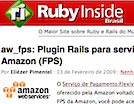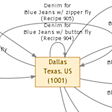 Managing and organizing multiple JavaScript files in your Rails applications can be a real pain, especially when it comes to deploying your application and you need to minimize those JavaScript files down for better application performance.
Managing and organizing multiple JavaScript files in your Rails applications can be a real pain, especially when it comes to deploying your application and you need to minimize those JavaScript files down for better application performance.
Enter Sprockets, the new dependency management and concatenation library from 37signals (or, more specifically, Sam Stephenson). Once installed, Sprockets allows you to organize your application’s JavaScript files into smaller more manageable chunks that can be distributed over a number of directories and files.
Using directives at the start of each JavaScript file, Sprockets can determines which files your current JavaScript file depends on. When it comes to deploying your application, Sprockets then uses these directives to turn your multiple JavaScript files into a single file for better performance. Read More







 Can you remember what a hideous chore it was to deploy Ruby-based apps (Rails apps being a key example) before early 2008? FastCGI, proxying schemes, plain old CGI – it was all a bit of a mess. It was so bad, in fact, that in January 2008 we posted
Can you remember what a hideous chore it was to deploy Ruby-based apps (Rails apps being a key example) before early 2008? FastCGI, proxying schemes, plain old CGI – it was all a bit of a mess. It was so bad, in fact, that in January 2008 we posted  If you read a lot of Ruby blogs, you might see people talking about testing (or its behavior driven equivalent) as if it’s the holy grail, yet most Ruby books and online tutorials fail to cover it in much detail at all. Last year, Jamie Van Dyke wrote an article for
If you read a lot of Ruby blogs, you might see people talking about testing (or its behavior driven equivalent) as if it’s the holy grail, yet most Ruby books and online tutorials fail to cover it in much detail at all. Last year, Jamie Van Dyke wrote an article for 


 It’s approaching two weeks now since
It’s approaching two weeks now since  Priit Haamer is an Estonia-based Ruby developer who has put together a “
Priit Haamer is an Estonia-based Ruby developer who has put together a “

 2012 update: Still not up to speed with Ruby 1.9? Check out
2012 update: Still not up to speed with Ruby 1.9? Check out 

